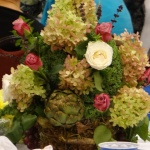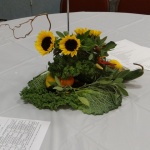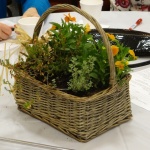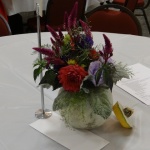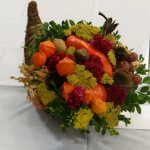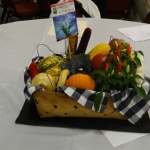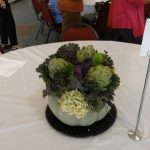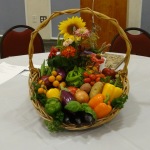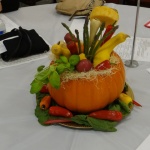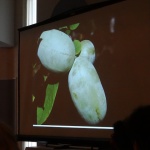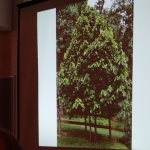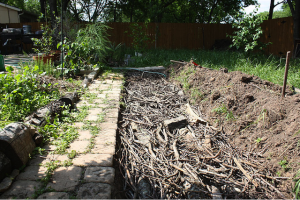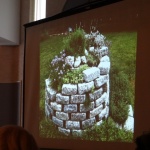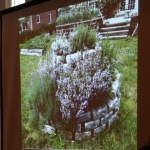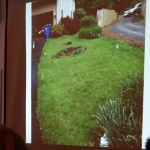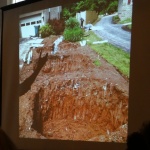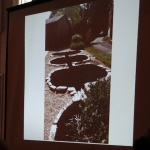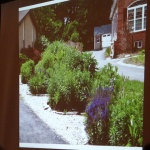This years meeting, lucky for us, was held in Westminster at St. John’s Portico which had plenty of room. Our director, Carolyn Braverman had asked all participating clubs to bring a table arrangement utilizing seasonal vegetables and fruits. These are a few examples of the designs from District V clubs:
The program speaker was Michael Judd of Ecologia. He spoke to our club last year, but presented additional new material for this meeting. His theme revolved around concepts of permaculture which combines ecological systems design, sustainability and earth friendly resource management. It works with, rather than against nature, reinvests (recycles) surplus back into the system. Michael introduced a number of common themes in the permaculture movement:
1..Agro-forestry or permanent forest crops. A couple examples are growing native paw-paws trees and hardy kiwis for fruit. They are also attractive trees or shrubs in their own right.
- Paw paw fruit cluster
- Attractive paw paw
2. HugelKultur: burying rotting tree trunks and brunches beneath a mound of dirt so that nutrients and tree decomposition can benefit any crops planted atop the mound and be watered by the natural sponge-like water absorption of the buried materials.
3. Herb spirals–especially useful for growing Mediterranean herbs or other plants requiring well drained conditions. The spiral design also provides conditions conducive to growing in mini eco-zones depending on where one plants on the spiral. They can be high, low, small or expansive spirals.
4. Swales to capture water so that runoff is diverted and prevented from wastage.
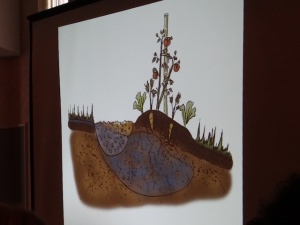 5.Rain garden water retention. As a landscape designer, Mr. Judd had a client whose yard was inundated with water from an adjacent property due to poor design and grading. The following pictoral series shows how a permaculture design turned a problem into an asset:
5.Rain garden water retention. As a landscape designer, Mr. Judd had a client whose yard was inundated with water from an adjacent property due to poor design and grading. The following pictoral series shows how a permaculture design turned a problem into an asset:
- Area subject to water run off
- Laying drains and digging catchment holes
- Filled with planting substrate and coping surround
- Finished result

